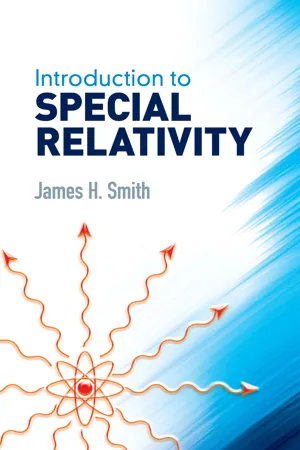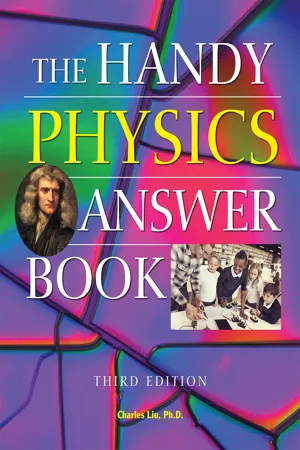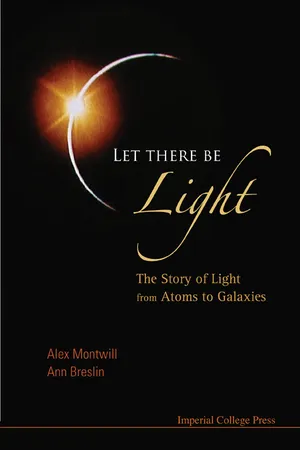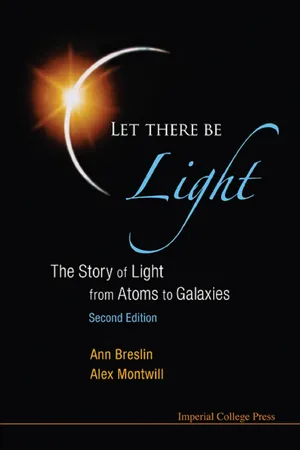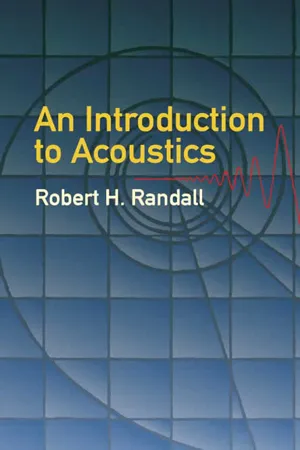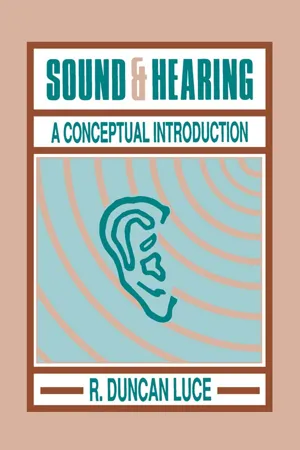Physics
Periodic Wave
A periodic wave is a repetitive disturbance that travels through a medium, characterized by a regular pattern of oscillations. It exhibits a consistent cycle of motion, with the wave shape repeating at regular intervals. Periodic waves are fundamental to understanding the behavior of various phenomena, such as sound, light, and water waves.
Written by Perlego with AI-assistance
Related key terms
Related key terms
1 of 4
Related key terms
1 of 3
9 Key excerpts on "Periodic Wave"
- eBook - ePub
- James H. Smith(Author)
- 2016(Publication Date)
- Dover Publications(Publisher)
something goes from start to finish.In all these cases we recognize the essentials of a wave: a disturbance moves from place to place with a speed that is determined by the properties of the medium itself.2-2 Periodic WaveS! FREQUENCY AND WAVELENGTHAlthough a wave can consist of a single disturbance which passes and then is gone, very frequently we are concerned with phenomena in which the disturbance repeats itself periodically and sends out regularly spaced waves. Figure 2-1 shows a stationary wave source S producing circular waves that travel out through the medium with a speed c. If the source produces f of these regularly spaced disturbances per second, it is said to emit a frequency f. The frequency of a sound wave determines its pitch. Middle C corresponds to 256 vibrations per second; upper C to 512; etc.If the source S produces f waves per second, the time between the production of two successive wave crests is 1/f. During this time the waves advance a distance λ, called the wavelength. It follows immediately that the speed isFigure 2-1This is a relation which is generally true of all regular Periodic Waves.Now consider an observer standing at O. As the waves pass him, they disturb his eardrum if these are sound waves, or rock his boat up and down if we are considering water waves. It is clear that he will hear, or be rocked, at the same frequency as the source; but let us see how this comes about in detail. In a moment the outermost wave crest reaches him. Then, a time Δt later, the next wave crest will reach him. Since it had to travel a distance λ at a speed c, Δt = λ/c. The number of pulses he receives per second, i.e., the frequency he observes, is thus c/λ Comparing this to Equation 2-1 - eBook - ePub
- Michael M. Mansfield, Colm O'Sullivan(Authors)
- 2020(Publication Date)
- Wiley(Publisher)
At the source the oscillatory motion is simply that of the source itself; at other points this motion is repeated, but at later times. At all points, therefore, the frequency of the waves is equal to the frequency of the source.We can also plot the disturbance of the water surface as a function of position, as it is observed at a fixed time. Figure 13.6 is such a plot, a ‘snapshot’ of the profile of the water surface. In this case the characteristic quantity which can be defined to describe the observed periodicity of the wave motion is its wavelength,λ.The wavelength is the distance between successive points after which the waveform is repeated, for example between successive crests or successive troughs.One complete wavelength,λ,passes the point P in Figure 13.4 in one period, T. We can therefore express the velocity of the waves in terms of these two quantities as follows:(13.1)As noted earlier, the wave velocity depends on interactions between the particles which make up the medium through which the waves are passing – it is therefore a characteristic of the medium and is fixed for a given medium in given conditions. The frequency is determined by the oscillation frequency of the source of the disturbance, with the wavelength adjusting to satisfy Equation (13.1) .A sinusoidal wave across a water surface plotted as a function of position. The wave is observed at a fixed time.Figure 13.6A further characteristic of a wave motion is its amplitude. As in Section 3.5 , the amplitude is defined as the maximum disturbance from equilibrium, indicated by A in Figures 13.5 and 13.6 .We have defined measurable quantities which can be used to characterise a wave motion. Our next task is to derive an equation which relates these quantities for the type of wave motion that is produced by a source which is oscillating with simple harmonic motion. We will then be able to predict the disturbance produced by the wave at any position and time. - eBook - ePub
Seeing the Light
Optics in Nature, Photography, Color, Vision, and Holography (Updated Edition)
- Joan G. Thomas, David Falk, Dieter Drill, David Stork(Authors)
- 2018(Publication Date)
- Echo Point Books & Media(Publisher)
A sine * wave is the simplest wave and has the familiar shape shown in Figure 1.13. Although this is the wave most often drawn in textbooks, it is by no means the only kind of wave (Fig. 1.14). The waves in Figures 1.13 and 1.14a repeat, and are therefore called periodic, whereas that of Figure 1.14b is meant to be random and nonrepeating. FIGURE 1.13 Snapshot of a sine wave, showing wavelength λ. The period † of a Periodic Wave is the time between repetitions that we find if we stand at one place. To describe the time behavior of a Periodic Wave we often use not the period, but its inverse, called the frequency. The frequency of a wave is the number of times each second that an oscillation occurs at any fixed point in space. So the frequency measures directly how rapidly the wave wiggles. Frequency is usually denoted by the Greek letter, ν (“nu”), and its units are 1/seconds or “(cycles) per second” or “hertz.” ‡ FIGURE 1.14 Waves other than a sine wave: (a) a Periodic Wave, (b) a random wave. A sine wave thus can be described by its frequency v (time behavior) and its wavelength λ (space behavior). But there is a connection between the behavior in space and the behavior in time. That connection is the wave’s speed, v. It tells you how far a crest (or valley) travels in a second. Imagine a coat hanger wire bent into the shape of a sine wave. If you move the wire quickly past your nose (large), you will experience a high frequency of bumps against your nose (many bumps per second). If you move the wire more slowly (small v), you will experience a low frequency of bumps. Even though the two waves have identical spatial behavior (wavelength), they have different frequencies because of their different speeds. A wave moves a distance of one wavelength in the time of one period - eBook - ePub
- Myeongkyu Lee(Author)
- 2019(Publication Date)
- Apple Academic Press(Publisher)
x-direction, which is mathematically expressed asy = ψ(= A sin kx , t)(⋅x − v t)(1.8) FIGURE 1.3 (a) Disturbance variation with x at a fixed time and (b) disturbance variation with t at a fixed position.Equation 1.8 is surely a solution of the differential wave equation. The maximum disturbance (here, constant A) is known as the amplitude of the wave. Holding either x or t fixed result in a sinusoidal disturbance, so the wave is periodic in both position and time. Figure 1.3a shows a section of the wave at a fixed time. The disturbance variation with time at a fixed position is pictured in Figure 1.3b . The spatial period of the wave is known as the wavelength and is denoted by λ, as shown in Figure 1.3a . An increase in x by λ reproduces the same wave. This is equivalent to changing the argument of the sine function by 2π. That is,Therefore, we haveA sin k(= A sin kx − v t)[= A sin](− v tx + λ)[⋅k](+ 2 πx − v t)k =2 π/λ ,(1.9) where k is known as the propagation constant. When the wave is viewed from a fixed position as in Figure 1.3b , it is also periodic with a repetitive unit called the temporal period, τ. Increasing t by τ reproduces the wave, so thatA sin k[= A sinx − v](t + τ)[⋅k](+ 2 πx − v t)It follows from this relation that kvτ = 2π. Note that all these parameters are positive quantities. Rather than the temporal period, its reciprocal called the frequency, ν = 1/τ, is more commonly used. The relation between speed (v), frequency (ν), and wavelength (λ - eBook - ePub
- Charles Liu(Author)
- 2020(Publication Date)
- Visible Ink Press(Publisher)
These are terms used to describe the properties of a wave. A wave’s amplitude is the distance from the midpoint of a wave to the point of maximum displacement (a crest in a transverse wave or the compression of a longitudinal wave). The period is the amount of time it takes a wave to complete a full cycle (from crest to trough back to crest, or compression to rarefaction back to compression). The frequency is the number of cycles of the wave that occur in one second. The wavelength of a wave is the distance from crest to crest or from compression to compression.Amplitude describes the height of a wave; frequency describes the number of waves within a certain period of time.What is the relationship between a wave’s period and frequency?
The period and the frequency of a wave are always reciprocal quantities. For example, if the period of a wave is 0.001 second, then the frequency is 1,000 cycles per second or 1,000 hertz (Hz); and if the period of a wave is 1,000 seconds, then the frequency is 0.001 cycle per second or 0.001 Hz. Mathematically, if a wave’s frequency is given by f, and the period of a wave is given by T, then f = 1/T and T = 1/f.What is the relationship between a wave’s velocity, frequency, and wavelength?
Suppose you shake a rope up and down at a constant rate. The rate or frequency is the number of times your hand is at the top of its motion per second. As the waves move along the rope, the distance between the crests of the rope—that is, the wavelength— will remain the same. The wavelength depends both on the frequency of oscillation and on the velocity of the wave along the rope. The relationship is velocity = frequency times wavelength (v = fλ) or wavelength = velocity/frequency λ = v/f).Note that if the frequency of a wave increases, the wavelength decreases; the velocity of that wave, however, is a property of the medium (rope) and doesn’t change. In other words, the frequency and wavelength of a wave are inversely proportional to each other.On what does the amplitude of a wave depend?
The amplitude depends on the amount of energy that the source of the wave puts into the wave. For example, the amplitude of a transverse wave in a rope depends on how hard you shake it. For a sound wave, it depends on how much compression the loudspeaker or musical instrument creates. The amplitude of a wave does not depend on its frequency, wavelength, or velocity. - eBook - ePub
Let There Be Light
The Story of Light from Atoms to Galaxies
- Alex Montwill, Ann Breslin(Authors)
- 2008(Publication Date)
- ICP(Publisher)
Chapter 6 Introducing WavesWhat is a wave? Waves are so diverse that we might tend to regard different types of waves as separate entities, unrelated to one another. Do events such as the devastation of a region by an earthquake and the melodic tones of a musical instrument have anything in common? In this chapter we explore the common ground between these and many other phenomena.Waves carry energy from one place to another. They also act as messengers, transmitting information. We look at different types of waves, how they are created, what they are ‘made of’ and how they carry out their functions of carrier and messenger.To deal with some aspects of wave behaviour, we need to express the properties of the waves mathematically. We can then make quantitative predictions regarding many wave-related phenomena seen in nature. In a mathematical analysis of waves, it is most convenient to use the simplest type of wave form—a continuous sine wave. It is gratifying, if rather startling, to find that even the most complicated Periodic Waves can be constructed simply by adding a number of these sine waves.6.1 Waves—the basic means of communicationWhen talking about waves, we most likely picture a seaside scene with ocean waves approaching the shore or perhaps a ship at sea tossed in a storm. A survey asking the question ‘What serves as the most common means of communication?’ would be unlikely to favour the answer ‘Waves’. Yet, heat and light from the sun are carried by waves. We could neither see nor speak to one another were it not for light waves and sound waves. Even the sensation of touch relies on the transmission of nerve impulses, which are composed of wave packets.Waves coming in on a beach. Courtesy of Johntex.Electromagnetic waves, which pervade all space, and without which the universe could not exist, are the basic theme of this book. Light - eBook - ePub
Let There Be Light
The Story of Light from Atoms to Galaxies
- Ann Breslin, Alex Montwill(Authors)
- 2013(Publication Date)
- ICP(Publisher)
Waves’. Yet, heat and light from the sun are carried by waves. We could neither see nor speak to one another were it not for light waves and sound waves. Even the sensation of touch relies on the transmission of nerve impulses, which are composed of wave packets.Waves on a sandy beach at Cabo Polonio, Uruguay. Courtesy of Johntex, 2006.Electromagnetic waves, which pervade all space, and without which the universe could not exist, are the basic theme of this book. Light is just one member of that family. These waves propagate in a mysterious way, as we shall see in later chapters.We have learned to produce electromagnetic waves and to put them to a variety of uses, many of which are now taken almost for granted. Radio waves facilitate the remote communication that enables us to hear and to see the latest news and to watch our favourite television programmes. We can receive information about the lunar surface from space probes. In medicine, lasers produce waves for keyhole surgery; X-rays are used in diagnostic imaging and radiation therapy; infrared waves heat muscles and relieve pain. Microwaves cook food; radar waves guide planes and ships. Last but not least, a tiny infrared beam from our remote control allows us to change channels without leaving our armchair in front of the TV set!Once we become aware of the seemingly endless variety of waves, it begs questions such as: Do all waves have something in common? How can we deal with waves mathematically? What is the justification to say that light behaves as a wave?Mechanical waves in a mediumWhen a medium is disturbed by a wave, individual particles oscillate about their equilibrium positions and transmit energy by their mutual interactions.A stone dropped into the middle of a pond gives rise to waves spreading out on the surface of the water in ever-increasing circles. The expanding waves show that something definitely propagates, but it is not the water itself; ducks sitting in the path of the wave bob up and down but do not necessarily move in the apparent direction of propagation. Energy contained in the local oscillations of individual water particles is transmitted with no net motion of these particles from the middle of the pond to its edge. - eBook - ePub
- Robert H. Randall(Author)
- 2012(Publication Date)
- Dover Publications(Publisher)
CHAPTER 2PLANE WAVES IN AIR
2–1 Introduction.
The displacement of a single particle held in an elastic suspension gives rise to a simple harmonic vibration around a fixed point. On the other hand, the displacement of a portion of an extended medium, having the properties of distributed mass and elasticity, always results in waves, traveling out from the disturbed region. It is the mass or inertial property of the medium which keeps the propagation speed from becoming infinite, and in general the greater the specific mass (i.e., the density), the lower this speed will be. Conversely, the “stiffer” the medium, the greater will be the unbalanced force upon a portion of the medium adjacent to the disturbed region and the greater the resulting acceleration. A “stiff” medium will therefore make for a high propagation speed.For the study of plane waves the general physical approach will be as follows. We will assume a deformable medium, having both elastic and inertial properties. A particular type of deformation will be assumed to exist at a certain location in space, at a particular time. Then, in view of the physical properties of the medium, we shall see that in the region being considered the degree of deformation changes with time and, in addition, new deformations appear in adjacent regions. This may be stated quite simply in terms of the rates of change of the degree of deformation with both position and time, i.e., in the form of a differential equation. It is the solution to this differential equation that describes completely the wave phenomena.The student of electricity and magnetism should compare this procedure with the method of demonstrating the necessity, under certain conditions, for the existence of electromagnetic waves. In the case of electromagnetic waves we start, not with the mechanical properties of a material medium, but with Coulomb’s law and the principle of electromagnetic induction. Two “fields,” the electric and the magnetic, are assumed to be locally distorted, in the sense that they have local values differing from those existing in the surrounding regions. Just as the mechanical deformations in air then change with time and position, so one can also express the rates of change of the two fields with time and space coordinates. It is not strange that both the differential equation and the integral equation obtained in this manner are similar in many respects to the equations for sound waves. - eBook - ePub
Sound & Hearing
A Conceptual Introduction
- R. Duncan Luce(Author)
- 2013(Publication Date)
- Psychology Press(Publisher)
FIG. II.4 A plot of pressure versus time for a longitudinal pulse in a gas. Note that visually this plot does not differ from that of a transverse pulse on a wire.2. GENERATION OF WAVES
A wave consists of a series of identical pulses, one generated immediately after another. For example, on a wire, a slinky, or a piston in a cylinder, repeat the movement of the hand over and over to produce a wave. If done with perfect repetition, it is an example of an oscillator (see Section II.2.1 ).Our concern for the present is with one particularly simple class of waves, called sine waves; we investigate how sine waves may be generated and how we can describe them in terms of three numerical parameters.2.1 Oscillators
DEFINITION: An oscillator is any device that repeats a pulse in time with perfect regularity. A prototype oscillator is an idealized clock shown in Fig. II.5. Observe that the vertical height a of the radius with the arrow head is, by elementary trigonometry, given by a = A sin θ,1 where θ denotes the angle between the radius and the horizontal, measured counterclockwise and A denotes the amplitude or length of the radius. Let us suppose that this radius is rotating at a constant rate ω, which is called the angular velocity of the oscillator.FIG. II.5 The tip of a radius A of a circle with angle θ from the horizontal has a vertical height of a = A sin θ.Then the value of the angle θ at time t seconds after the radius was in the original horizontal location isThus, the value of the momentary amplitude at time t isFigure II.6 plots the momentary amplitude as it changes with time. This function is called a sine wave because it is generated by the sine function. It is the wave motion generated by many natural oscillators such as a pendulum.A sound wave in which the pressure amplitude varies as a sine wave is called a pure tone.FIG. II.6 If in Fig. II.5
Index pages curate the most relevant extracts from our library of academic textbooks. They’ve been created using an in-house natural language model (NLM), each adding context and meaning to key research topics.
Explore more topic indexes
Explore more topic indexes
1 of 6
Explore more topic indexes
1 of 4
